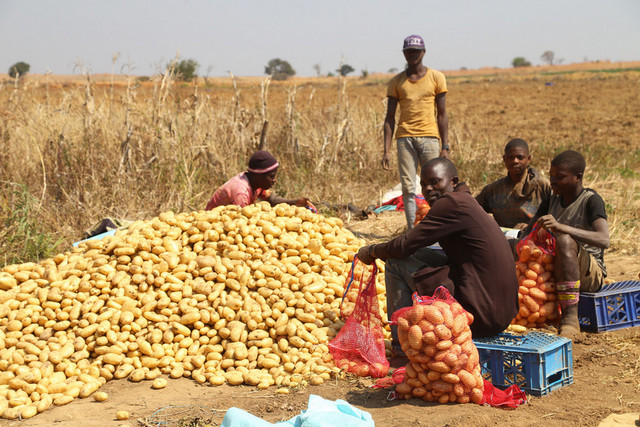Andrew Robinson is a familiar face in the Red River Valley potato industry. Now some of the players in Angola’s potato industry know him, too, and that could lead to closer ties between the African country and the Red River Valley.
 Robinson, an extension potato specialist with both North Dakota State University and the University of Minnesota, visited Angola in early March to share his expertise with potato growers there.
Robinson, an extension potato specialist with both North Dakota State University and the University of Minnesota, visited Angola in early March to share his expertise with potato growers there.
“There’s great potential for Angolans to increase their potato production,” he says.
The origin of Robinson’s trip traces back to September 2016, when more than 55 Angolans visited the Big Iron Farm Show in West Fargo, N.D., through the annual show’s International Visitors Program. The latter is organized by the North Dakota Trade Office and the U.S. Commercial Service.
The Red River Valley of western Minnesota and eastern North Dakota is the nation's leading producer of red potatoes and the only region that produces in volume for all of the chip, fresh, red and process markets.
During their Big Iron visit, some of the aforementioned Angolans toured a potato field that was being harvested, and the Fargo-based Robinson provided his expertise on potato production and storage. Robinson—who once lived for two years in Brazil on a church mission—spoke in Portuguese, which impressed the Angolans. Angola is a former Portuguese colony; Portuguese is the official language of Brazil.
One of the Angolan visitors, who wanted to expand his country’s potato production, invited Robinson to visit Angola. Robinson accepted.
 Angola, with a population of 25 million, was devastated by a long struggle for independence from Portugal, and then by civil war from 1975 to 2002. Though its economy is growing rapidly thanks in part to substantial mineral and petroleum reserves, its ag sector continues to struggle. Angola was once a major food exporter; today it imports most of its food, despite what Robinson describes as “ample food and water resources.”
Angola, with a population of 25 million, was devastated by a long struggle for independence from Portugal, and then by civil war from 1975 to 2002. Though its economy is growing rapidly thanks in part to substantial mineral and petroleum reserves, its ag sector continues to struggle. Angola was once a major food exporter; today it imports most of its food, despite what Robinson describes as “ample food and water resources.”
Food that is grown and sold domestically generally fetches a good price. Potatoes—which yield relatively large amounts of food per acre—are an attractive option for Angolan growers, Robinson says.
He worked with both small-scale farmers, who raise food mainly for their own families, and larger-scale operators, who use modern equipment. The small-scale producers often use the same seed on the same plot of land year after year and would benefit from better farming practices, Robinson says.
Robinson is hopeful that, over time, Angolan agriculture students and agriculture officials will come to the Red River Valley, learn more about potatoes and take that knowledge home to strengthen Angola’s own potato industry.
Source: Duluth News Tribune